Table of Contents
If hip flexor stretching is whack, what is better, Zac?
It’s super common to feel hip flexor tightness from sitting or a bazillion other things. The problem is that your traditional hip flexor stretches don’t really work…At all.
The reason why is NOT because your hip flexor muscles are this evil piece of your anatomy that hates you and cares little about your feeble attempts to stretch them.
It’s because tight hip flexors are part of a bigger movement strategy that your body uses.
And in order to get these muscles to let go, you have to teach your body a different movement behavior. One that takes into consideration ALL of the areas that influence hip flexor tension.
What are they? Well fam watch the video below and read the blog to learn!
What are the hip flexors?
Are the hip flexors simply evil muscles that exist within your body to cause you all types of pain and problems?
Uh, no fam.
The hip flexors are several muscles that act to flex the hip (aka bring your thigh closer to your abdomen. If you’ve ever sprinted, walked, went upstairs, done marching exercises, or kneed someone in the gut (wild times in Vegas), then you can be thankful you have hip flexors big fam!
For you anatomy nerds, some of the major players that complete this move include:
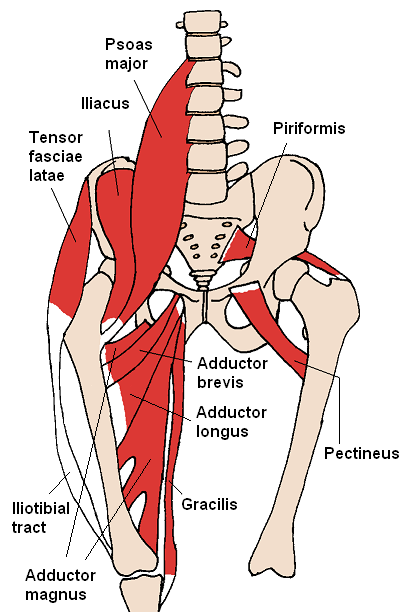
- Tensor fascia lata (TFL)
- Psoas major
- Iliacus
- Rectus femoris
What other actions do the hip flexors perform?
You’ll notice that the hip flexor muscles mentioned above have attachments elsewhere besides the hip. The TFL, iliacus, and rectus femoris all have attachments at the pelvis, and the psoas attaches at the lumbar spine.
If muscles attach at a given location, that means that they influence movement at that specific area.
The hip flexors which attach at the pelvis, namely TFL and rectus femoris, assist in anteriorly tilting the pelvis. The iliacus may also perform some degree of anterior tilting, as well as closing the pelvic inlet.
The psoas major may contribute to some lumbar flexion and compressing the lumbar spine (not a bad thing, again, there are no bad muscles).
Why do hip flexors become tight?
Do hip flexors become tight because of fancy things like adverse neural programming? Shortened muscles from sitting hours on end? Mars being in retrograde?
The answer is unclear.
It’s unlikely that there is one specific cause as to hip flexors being perceived as tight. The hip flexors will be more engaged if your body is biasing towards the aforementioned movements that these muscles performed:
- Hip flexion
- Anterior pelvic tilt
- Pelvic inlet compression
All of these actions create a forward motion of the body’s center of mass.
Why someone may have a tendency more so than others towards these movement actions could be due to genetic reasons, epigenetic factors, environmental factors, etc.
It cannot be stated enough, these muscles are not inherently bad. Muscles are stupid, yo! They are merely engaging because the body is orienting in the above manner?
Why would the body have a bias towards the above actions?
I’m glad you asked!
First off, having some degree of anterior pelvic tilt in the standing position is normal. This study demonstrated that if you are standing upright against gravity, then an anterior pelvic tilt is a useful position.
The reason why anterior pelvic tilt occurs when standing upright is because it allows the femurs to better internally rotate. When you internally rotate through the extremities, you can better apply force into the ground, ensuring that you do not fall. YOU DON’T WANT TO FALL FAM!
What becomes problematic is if this pelvic orientation is the only option you have available. When your ability to perform opposing actions at the pelvic or hips is limited, then tissue ischemia (reduced blood flow) may happen in the region of the hips flexors, contributing eventually to a sense of tightness, pain, or discomfort.
Why do traditional hip flexors stretches not work?
The biggest reason why traditional hip flexors are whack is because of two reasons:
- They minimally address the center of mass tendency to shift forward
- They only look at the femoral influence on the hip
In the case of the center of mass shifting forward, this tendency occurs not just at the hip, but the whole body. That means everything shifts forward, including the viscera (guts), ribcage, etc.
To increase the available movement beyond the anterior pelvic tilt, you must teach the body to shift the center of mass backward.
Secondly, most hip flexor stretches look solely at the femoral action of the hip flexors.
In order to stretch the hip flexors, you have to take them the opposite direction of their contracted (or shortened) position, hip extension. If you drive hip extension, your hip flexor stretch will looks like this:
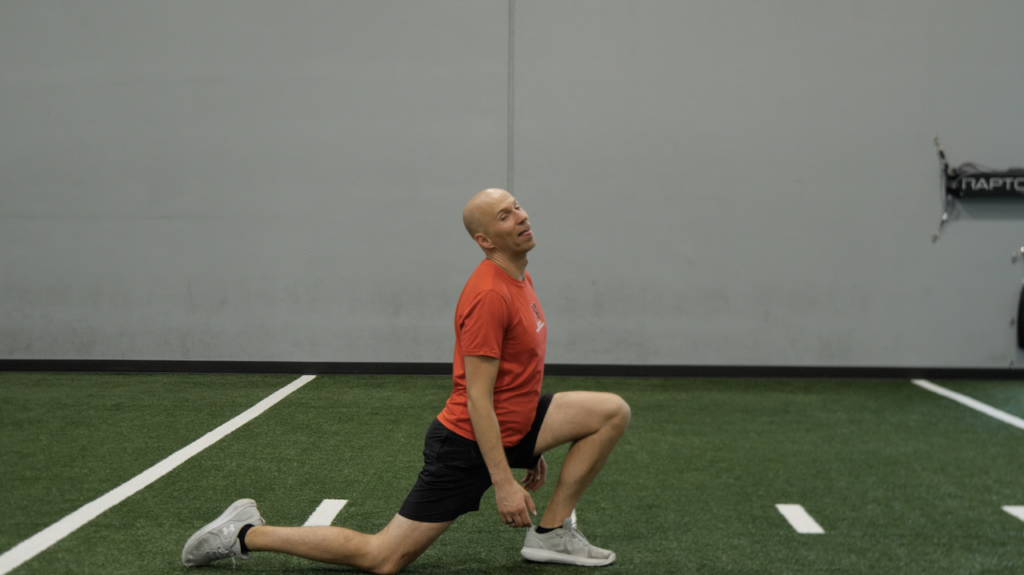
Or maybe you’ll get all reciprocally inhibited up in the spot, and tense you glutes REALLY HARD to FORCE those hip flexors to relax. TAKE THAT YOU STUPID HIP FLEXORS!!!!!
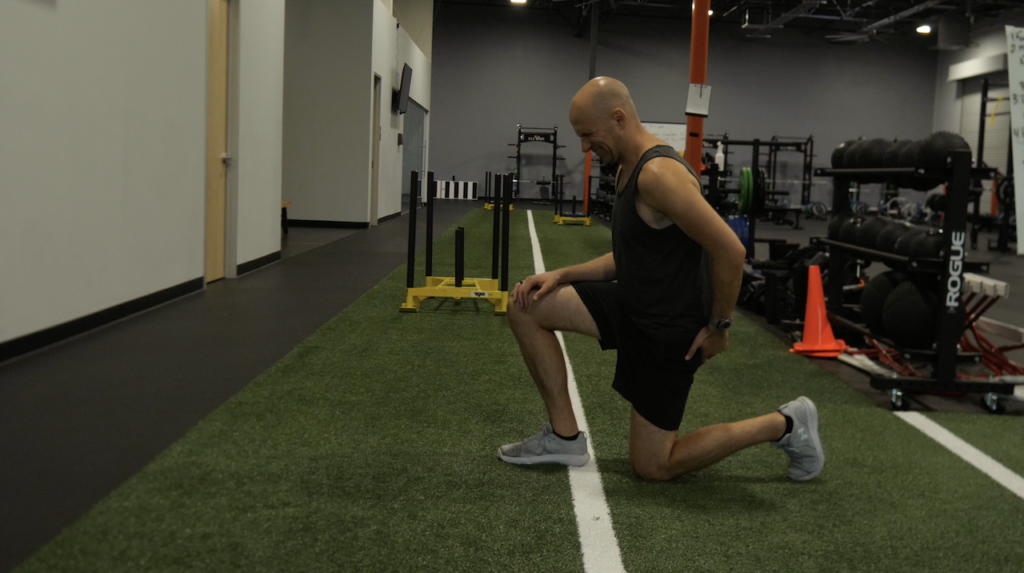
Both of these versions have a major problem: they only look at the hip extension component, while neglecting the pelvic and spinal components of the hip flexors.
To truly stretch out the hip flexors, you have to perform actions at the pelvis and spine as well. If Birdman was a physical therapist, he’d say you have to put some respek on their proximal attachments.
So let’s put respek on what it takes to make a great hip flexor stretch. That includes:
- Some hip extension
- Slight posterior pelvic tilt
- Full exhalation to shift the abdominal viscera posteriorly
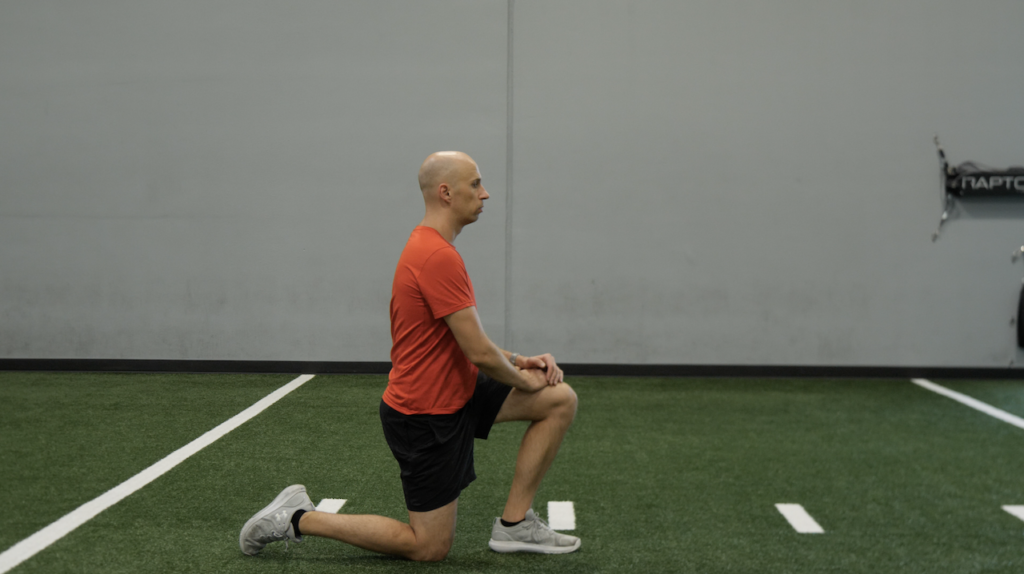
PRO TIP: You do not need to stay in the above position at all times forever. This action is merely a strategy to allow more movement to become available.
Do I even need to stretch my hip flexors?
So now you know how to actually get a good stretch of the good ole hip flexors, but do you even need to stretch these puppies?
Typically, I’ll only use interventions similar to the ones I’m about to show you if someone lacks hip extension, the position that would increase the mobility and reduce tension of the hip flexors.
There are two easy ways to see if you have enough hip extension:
- The half-kneeling position
- The Thomas Test
Let’s look at each of these positions.
The half-kneeling position
If you can get into half kneeling without issues, you probably don’t need any hip flexor stretching.
To have a boss half-kneeling, you ideally want to get close to having close to a straight line along the following markers:
- Back leg knee
- Back leg hip
- Torso
- Head
- Slight posterior pelvic tilt
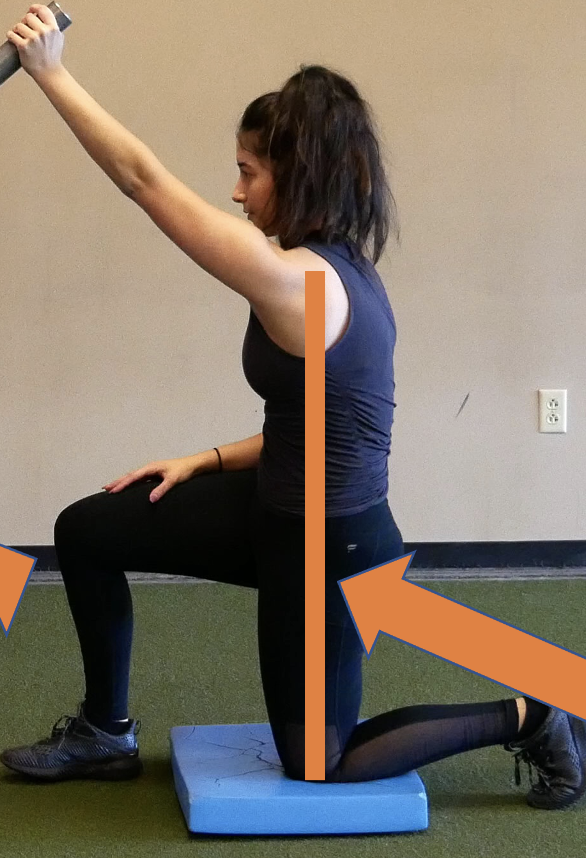
If you nail all of the above and have no pain/discomfort, then you probably don’t need to stretch your hip flexors. If you don’t, then maybe doing the moves I’m about to show you may help.
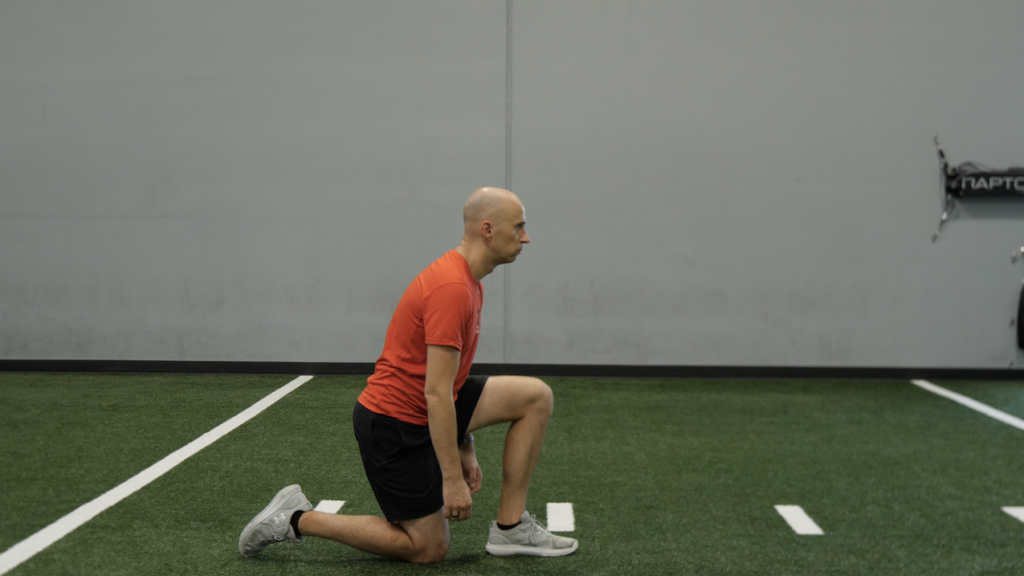
If you are unsure if you are lined up nice and straight, then use the thomas test
The Thomas test
Admittedly, the Thomas Test isn’t perfect, but it’s not a terrible measure to see if you have a good amount of hip extension.
Here’s how to do it:
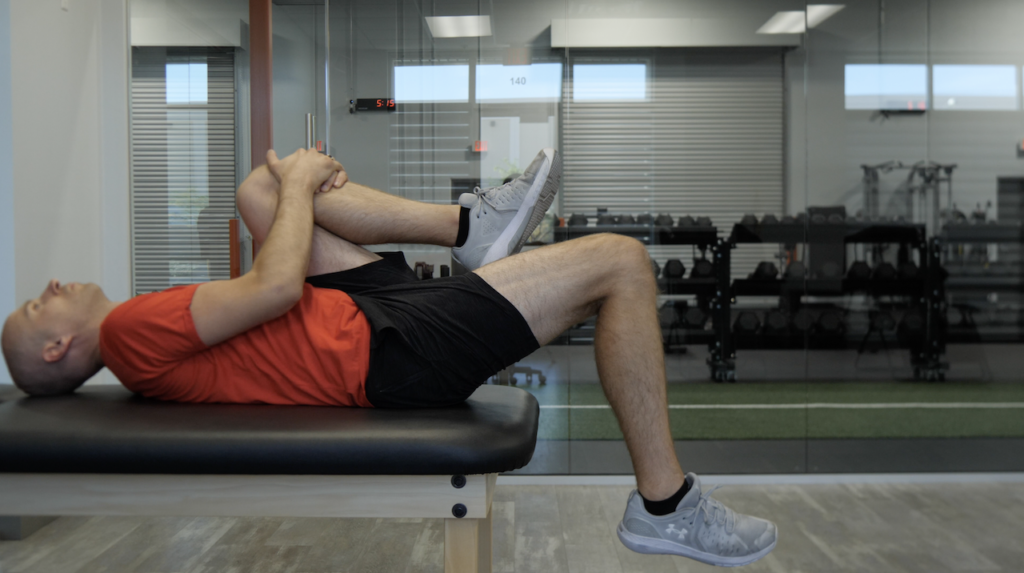
Goal: Thigh parallel to ground
- Find a mat or elevated surface
- Lie on your back with knees glued to chest
- Keep back flat, Drop one leg off the edge of a mat
- Let your leg relax, and see if you are close to parallel
If you hit parallel or more, you probably don’t need to stretch your hip flexors.
Two better hip flexor stretches
Now that you’ve checked out if hip flexor stretching should even be something you pursue, and you know how to design a better hip flexor stretch, let’s look at some better ways to get your hips all loosey goosey.
Half-kneeling bent over breathing
I’ll usually start people with this particular move, as it’s at less of an end-range position than your typical hip flexor stretching, and utilizes all the components needed to create an effective stretch.
This variation is slightly different than what I have in the main video, but will work just as well:
- Assume the half-kneeling position
- Support the arm opposite to the forward leg on a box/stepstool/yoga block
- SUBTLY tuck the hips
- Push into the box so the chest moves away from the box and abs engage (don’t overly flex the trunk)
- Hold position and breathe silently in through the nose, slowly and fully through the mouth
This move is especially money if you get some knee/quad discomfort in the half-kneeling position.
Half-kneeling goblet hold
Once you have mastered the above move, I like using a weighted hold in half-kneeling. I like it because it helps engage the abs a bit more than your classic hip flexor stretches, aiding in good spinal position and encouraging visceral movement posteriorly.
Here’s how to do it:
- Assume the half kneeling position
- Hold a weight at about chest height
- Reach elbows forward + shift body backward
- SUBTLY tuck the hips
- Hold position and breathe silently in through the nose, slowly and fully through the mouth.
Sum up
It’s time to put classic hip flexor stretches to rest. They don’t work because they forget about so many actions that the hip flexors perform.
If you can encourage the other positions that would help the hip flexors relax, then finally, your hip flexors will be chillin’ more than Bob Dylan!
To summarize:
- Hip flexors are not evil muscles, but may become more active because of the body’s attempts to remain upright
- The hip flexors act at more than just the hip joint, and forgetting about this fact is why most conventional hip flexor stretches fail
- Test yourself to see if hip flexor stretching is worthwhile. What doesn’t get measured doesn’t get managed
- Utilize posterior pelvic tilting, breathing, and hip extension to get more bang for your buck with hip flexor stretching.
How do you keep your hips loose as all hell? Comment below and let the fam know!
Photo credit
Image by Ulrike Mai from Pixabay

